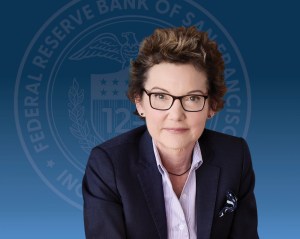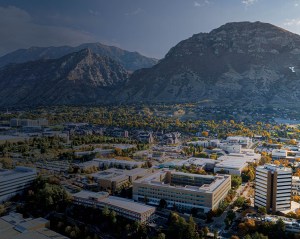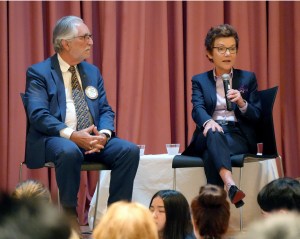Wednesday, Sep 24, 2025
2:10 p.m. MT,
1:10 p.m. PT
Salt Lake City, UT
Affordable HousingArtificial IntelligenceBankingCommercial Real EstateFederal Open Market Committee (FOMC)Financial MarketsHousing & Real EstateInflationInterest RatesLabor MarketsMonetary PolicyResidential Real EstateU.S. Economy
Transcript
The following transcript has been edited lightly for clarity.
Kurt Dirks:
One of the questions that people wanted to hear a little bit more about is how the labor market is. So, you’re a labor economist, obviously know this very well, and people are paying attention to the labor side of that dual mandate that you have. One of the questions is, is the labor market weakening at a concerning rate. How do you see that—how do you feel it from what you’re hearing?
Mary C. Daly:
Absolutely. So, if you study labor or the economy long enough, you start using very specific words to mean things. So, I wouldn’t really characterize the labor market as weak. The unemployment rate is low, especially in many states like Utah, very low. The people are finding jobs. Wage growth is still expanding at productivity plus inflation. So you have a sense that people are moving and doing things. But what is true is that it’s not as speedy as it once was. So, if you think three years ago, it was what we called frothy. Then it got to healthy. Then it got to solid. Now I’d say it’s sustainable, but I do not want to see further softening.
So, one of the things that you see in the rate cut is some insurance. You see the labor market has softened at a pretty good clip. It’s come down rapidly from its highs. But the level of where it’s sitting right now isn’t weak, but you want to prevent that weakness because we know historically once it tips into weakness, it’s extremely hard to get it back out. And so, we don’t want to get in a state of weakness, and that’s part of why the interest rate decision was very straightforward. You’re taking out some insurance, as the chair [Powell] said. I think that’s a good way to think about it. You’re basically giving yourself a little support for the labor market to maintain its health while you’re continuing to bring inflation down to our 2% target. But that is something that’s top of our mind. My mind is, let’s get the risk out of the labor market so that we don’t end up with a softening to sustainable that comes through sustainable and ends up being weak.
Kurt Dirks:
That’s great. Well, let’s talk about that other side of that dual mandate then, which is related to inflation and prices. Here’s a question from our business community. Given the recent inflation data and employment reports we’ve been seeing, how concerned should we be about the potential of stagflation in the current economic environment?
Mary C. Daly:
So, this will be a test of your willingness to share your age, but there are people among us who have lived through what we thought of as stagflation, and this is not that. So, stagflation is traditionally thought of as something that’s a much higher inflation number, let’s just pick one, 7% inflation, 7% unemployment, growth in the economy that’s well below what we are potentially able to grow at, so, say, 1%, less than 1%. It’s a sense that we’re stuck in the mud. We aren’t stuck in the mud as an economy. And so I don’t see stagflation is around the corner. What I do see is that inflation’s been printing above our target for quite a while and that people have been enduring that sense that prices are rising, they’re rising at a faster clip. When I get up in the morning, I still have to think about price increases, and we have work to do there.
On the labor side, we just talked about this, this isn’t a weak labor market. It’s just a softer one. And we don’t want it to get weak, so we have to give it some support. But really, people are still finding jobs. The unemployment rate remains relatively low, by historical terms. And inflation is not 7%. It’s around 3%, and that’s with tariffs. If you take the tariff sectors out, inflation is roughly 2.4, 2.5%. So we’re getting much closer to our 2% target. So, I’d say that’s an economy that still needs monetary policy bridling, but not as much as we had. But it’s not something that I see as faltering.
And recession risk, I just looked at the recent statistics again, coming over on the plane. You get a lot done on planes. But the recession risk is very low right now. Businesses and consumers, they don’t see recession is around the corner. They don’t really even see stagflation is around the corner. But it does make the news a little bit. But again, I would remind people stagflation is a very different thing. And if you want to read about inflation and stagflation, you can go back to the ’70s.
Kurt Dirks:
While you’re on recession, which is one of the other questions that came up from a lot of people, what should we be looking at for indicators if we might have a recession in the future? How would our audience think about what might be indicators that that’s going to happen?
Mary C. Daly:
So, one thing that we know is, a reliable predictor of a recession in the next six months is a labor market that has rapid increases in unemployment. So, if you see the labor market having… every month, the unemployment rate goes up, and you see the duration of people searching for jobs, unemployment duration go up, that usually predicts that you’re going to have a recession as measured by the National Bureau of Economic Research. NBER is the official dating committee for recessions. I would offer, though, if you’re thinking about monetary policy, by the time we’re in a recession, unless we’ve had a shock that’s pushed us in there, it’s really late. We can respond, of course, with our policy tools, but we are working very hard to bring the economy to price stability without unnecessarily injuring growth of the labor market. And that labor market is our mandate, so we want to balance those two risks. So, I don’t see recession risk as very high, but consumers don’t see it as very high, and households don’t see it as very high.
Another thing you can look at is investment. So business investment. Businesses don’t invest into an economy that’s about to tip into recession. Business investment’s been one of the bright spots in the year, because consumer spending is slow, but business investment has risen. And a lot of that’s in technology and AI. But it doesn’t matter what they’re investing in as long as they’re out there and they’re investing and they believe in the future, in those cranes. That’s why I like to count cranes. I count cranes wherever I go. You guys might have the most cranes, really. But I do count them wherever I go. I count cranes, and I count the ships in the port, and how much stuff they’re unloading, and how much stuff they’re loading. So, it’s a good leading indicator.
Kurt Dirks:
That’s great. We have a lot of trucks coming into Salt Lake City. It’s a great indicator.
Mary C. Daly:
Now, that’s another one. Yes. Okay, good.
Kurt Dirks:
Well, perhaps the word of the year is tariff. And so, to what extent do you see increased tariffs impacting inflation? I believe Chairman Powell said that the impact of tariffs are one-time and not persistent. How do you see that?
Mary C. Daly:
So, certainly, economic theory and history would say that tariffs come, they change the price level. So if you’re tariffing a shoe, you’re going to pay more for that shoe. But it’s only going to happen once because the tariffs are a one-time thing. And then you don’t keep seeing the price of shoes go up. So, in that sense, it’s a one-time thing. But one of the things we’ve done as a committee, and I mentioned that we waited and assessed, is to see whether or not that theory would play out in the current economy. Because another thing you could worry about, and certainly we did think about, is, could it spill over? Could people see that the price of shoes has gone up? And so now, if you’re a barber, you want to raise the price of haircuts because you get on the price-increase train.
But we really haven’t seen that. We haven’t seen tariffs impact inflation in any sector other than the directly tariffed sectors, like goods, and only the tariffed parts of that. And then in services, you haven’t seen it’s gone up. And in housing, where they have many, many inputs that are tariffed, you haven’t seen the cost of housing rise rapidly. In fact, shelter inflation has been coming down, not going up. So, that’s, I think, evidence so far that’s consistent with tariffs being a one-time thing. Now, that doesn’t mean that it’s not something that consumers have to deal with. But again, on tariffs, a thing we didn’t know is whether consumers would bear the entire burden or whether some of it would be passed through to the different parts of the supply chain.
So, I remember in April, I was talking to some business leaders at a roundtable here in Salt Lake, and they said, “Oh, we’re not going to pass it all on to consumers. In a world where consumers were not in the situation they were in, you might be able to, but right now consumers have been picky, they’re worn out from the high inflation we’ve already had. So we’re going to try to split it, give it a little bit to the importing country, take a little bit at every little turn. And then by the time you get to the consumer, the inflation impact is just lower.” And we’re seeing that, right? If you look at the announced tariffs, the tariff revenues, they have not come into consumer prices because people take them along, firms take them along the supply chain, and everybody shares a little bit of that or spreads it out over a longer period.
Kurt Dirks:
That’s super fascinating. In Utah, we have an interesting challenge with, because we’re growing so much around housing affordability. And it’s a major concern here in Utah and for our future. The current interest rate environment’s disproportionately affecting first-time homebuyers and low-income households. So, I know the Fed does not deal with housing policy, but how do you think about, how do you analyze the increasing cost of housing as you formulate policies and you think about your role?
Mary C. Daly:
I’ll just start with what you mentioned. I mean, we have one tool, the interest rate, and we have two goals, price stability and full employment. And we make interest rate policy for those goals but also for the whole nation. And so, one of the challenges is, when you make those changes to bring inflation down, it can affect sectors like housing. But over time, getting inflation stabilized actually helps with house price appreciation.
So, the thing that I think is really important is this is not a Salt Lake City or Utah situation just so. There’s a group in Washington, the Cato Institute, and they did a survey. I’m really just talking about their survey. It’s quite nice. It’s now a little bit… I think it was done last year, but it was really helpful in this regard. They did a survey across the United States, and they asked people, “What is your number one concern?” And housing affordability was the number one concern. Then they said, “Well, let’s break it down by geography, wealth, income, sector, age, political party,” and everybody shared the same concern. And then they did some looking into it, and they said, “It doesn’t matter whether you’re a first-time homebuyer, or you’ve got grandkids and you want your grandkids to live closer to you, so you want your kids to move back near you, or they can’t afford the neighborhood.” And people can’t downsize because they can’t sell their home into an environment where people can’t afford it.
So, what is happening? The answer to what is happening—if you’re a homebuilder, you know this—is that home supply, the supply of homes available for sale, is less than the desire to have homes. Supply and demand are completely out of balance. And that imbalance has been growing since the global financial crisis, when the housing market really got hurt. It was the starter for all of that. And builders became very focused on not getting into that situation again. And as a consequence, we have too few homes for that population that’s been growing. And so we have this imbalance.
So, what do places do? And I’d say that Utah, I mean, I’ve seen a lot of housing out there. There’s a lot being built. You just drive from the airport to downtown and you see… I mean, I’ve been coming since 1996… that was just open area, now it’s housing. But this is something that you see going on in other parts of the country. And where I see the most possible solutions is in public-private partnerships, in civic leaders, where civic leaders say, “Okay, let’s think about zoning,” where private sectors say, “We need…” companies say, “Let’s invest in this because we need workforce housing or else we don’t have our workforce near where they need to live.” We have community sectors, which have mostly been focusing on affordability issues for the very lowest income. I think we now have to go all the way up the income distribution and say, “We just need more housing.”
So, I’ll leave you with this, which is a national statistic. Back in the early ’60s… And the numbers change depending on how exactly you do this calculation, but the direction is right. Back in the early ’60s, 60-something percent of homes, the majority, were available to first-time homebuyers. The price point was low enough that a first-time homebuyer could afford one. Today, it’s closer to 13%.
Kurt Dirks:
Wow.
Mary C. Daly:
So, that’s also about the types of homes we build. If we build larger homes, they have higher price points. If we build smaller homes, they have lower price points. So, somewhere getting that balance right, involving homebuilders, involving civic leaders, involving the private sector businesses, I think that’s where we’re going to need to go. But it’s a national problem. The interest rate will help a little bit, but there’s not enough relief in interest rates, if we just bring them back to neutral even, that would cause this to change. It’s really about the dynamic of the situation we’ve found ourselves in that started all the way back in the aftermath of the global financial crisis.
Kurt Dirks:
So, that is a fascinating statistic and something that we’ll see what we can do about. Next month, we’re going to have, with Ivory Innovations here in town, one of our homebuilders is going to have a summit on thinking about how we can address this. The governor will be here. So, I know we have a lot of people thinking about this…
Mary C. Daly:
And Clark Ivory is one… He was a former Salt Lake City branch board member. And we keep in touch with him quite a bit to talk just about this issue. So, that’s an example, the kinds of things that you all are doing that I think I use when I go other places and say, “Where could you start to make a dent?”
Kurt Dirks:
Awesome. Let’s see. We’re going to turn to the audience in just a minute. I have a question related to students. You had a great session with students, a lot of great questions. I know we have a few more in here. So I’ll ask a related question so other students can hear and our entire audience can hear. You have one of the most amazing stories about dropping out of high school to support yourself, your family, getting a GED, going on to college, and here today, you are sitting here as the CEO of the [SF] Fed. Any thoughts about that journey along the way that will be helpful to our students and other people who are striving to make that climb? Any advice for them?
Mary C. Daly:
Yeah, sure. I think about this a lot. I mentioned Spence right at the top about how he put something in my mind, said something to me, took the time to build something. If you’re just starting out, whether you’re starting a business or you’re starting in your academic program, et cetera, and it’s new to you, it’s foreign, you’re not going to feel perfectly comfortable. And the thing that gives you comfort is reaching out to other people. I didn’t go to college because I was sitting at my house one day and said, “I’m going to go to college.” I wanted to be a bus driver because I was working three or four jobs, driving donuts around and working at Target and doing various things. I just wanted one full-time job. And I saw a billboard every time I drove the donut truck that said, “Become a bus driver. Good people, good pay.” And I thought, “Well, that’s a good future.”
So, I’m talking to this woman named Betsy, my mentor, who says to me, “Well, you cannot be a bus driver unless you have a GED.” And I was first deflated, and then she said, “But let’s figure out how to sign up and you get the GED.” So I get the GED. And then Betsy being Betsy… And all of us have this power, by the way. When Betsy did this, I’m 16, 17, she’s 32. She didn’t have to be 72. She was 32. So, everybody in here has the power to help people along the way. She said, “You should maybe get a semester of college.” So I did. And then she said, “You should go to a four-year program.” And I did. And then I went all the way to get a PhD. And I met so many other people along the way, like Spence and Randy and many people who are here from my board of directors, from different parts where they start out, they know me. Everyone says, “I know Mary from long ago,” but they always had something positive to say.
So, if you’re just starting out, your job is to take all those things in, grab hold of them, assemble them, and build your confidence. Because you’re going to have to practice your way to the types of things you ultimately want to do. And people along the way encouraging you are your ladder up. That really is a ladder up. I know if you’re here, you’re investing in skills and connections and learning your interests. But you have to invest in relationships with people who can give you the strength so that when you’re in a moment when you’re stressed or you don’t know if you can do it, you think of them, they’re by your side, and you go forward.
So, that’s my advice to you. We’re sometimes our own worst enemies in not taking in the positives that people say about us and using them as the ladder up that we need. So, don’t be an enemy of yourself. Be a champion of yourself. Every time you get a nice thing said to you, put it in… I have what I call my virtual box of diamonds. And I just pull those diamonds out when I need them and I look at them. And if you’re at a point when you can give diamonds freely, please do.
Kurt Dirks:
I love both sides of that story. And one of the things I’ve discovered by being here last year, we have a lot of Betsys here in Salt Lake City and who are members of the school. And I think that’s an awesome thing. So, be a Betsy out there if you’re not yet.
Well, let’s take a few questions from our audience. If you raise your hand, one of our staff members will bring you a mic. So, we have a question over here and one down here. So, Michelle, if you can grab one.
Audience Member 1:
I always like to ask this of every leader. And you’re talking about mentorship. What’s a book recommendation do you have for us?
Mary C. Daly:
Book recommendation. So, I read a lot of different books. But right now, I’m not reading a book that would inspire. I’m just reading a book that I enjoy. Maybe it’ll inspire me. So, I like this author… Now I’m going to be plugging him, but I like this author, C.J. Box, who writes these mystery novels. He’s… Isn’t he a park ranger? He does wildlife. He’s out there checking things in Wyoming. And I like doing that. So maybe this is my advice. Instead of a specific book to read, my advice is read a book.
No, seriously. I have reams of information I have to read as part of my work. But I also pick up a book here and there. And it can be a nonfiction book, a history book. It could be a novel. And I give myself a little time to let my mind rest on my work. Because if you let your mind rest on your work, you come back with more inspiration, you can think about problems differently, you can approach things with a calmer sense. And so, that’s what I’m reading now. If you haven’t read C.J. Box, I highly recommend it. I really enjoy his books. My wife says they get repetitive, but she’s addicted, too, and now she’s passed me up because she has more time to read. So, I enjoy that. But I guess all the books I read are really helpful to me at stepping back and stepping away from the day-to-day work. And I think it’s made me a better leader, a better thinker.
Kurt Dirks:
Great advice. Okay, we’ve got a question over here.
Audience Member 2:
Hi. I was just curious how you’re interpreting artificial intelligence when you’re looking at the Fed’s goal of full employment. And also, is AI changing the interpretation of how the unemployment rate is acting on the labor force and economic success in general with AI accounted for?
Mary C. Daly:
That’s a good question. It’s a great question because it has many elements to it. So, let me step back and say what our full employment mandate is. So, the fiscal agents, our elected officials, they, and your elected officials here in your area and private sector businesses, that’s going to determine the size of the labor force, productivity, and all the policies we have. That determines really where the settling rate of the economy will be. The Fed doesn’t do that. We manage the cyclical components of how the labor market fluctuates around that goal. So, if we have a rapid rise in unemployment, then we know that all the people who are there available to work aren’t able to get employed.
So, then we would think about adjusting the interest rate in order to support the economy to absorb those kinds of people, help businesses be able to feel like they can take risks, they can pay the cost of the interest rate plus the business, and they can hire more workers. So, that’s that dynamic. We don’t have a pen that says we can have more people in the labor market than the economy can provide because it’s really the nexus of business, how many people are there and interested in working, and then the policies that our elected officials create to promote that.
But you’re right, I do think about AI. At the San Francisco Fed, we have something called the EmergingTech Economic Research Network, and we set it up in January of last year to study AI and generative AI and to ask the question, “What are the outcomes on the economy? What’s this going to do to productivity? What might it do to the labor market? And how will people fare?” And so far, what I would say is that AI is not really taking jobs per se, it’s taking tasks. And we have had for a while now, less so today, of course, but we had had for a while now a shortage of workers able to do work. So the AI was helping businesses say, “Well, if I don’t have all the people I need, I can make the three people I have for that role better, because I can take more tedious, more automatable tasks off their plate.” But we have to continue to study this.
The thing I will say about AI is, don’t be afraid. Technology is not something to fear, it’s something to leverage. It’s a tool. And so, the more you know… I have five AI models on my personal phone, and I use them every single day. I actually send the same prompt to all the models, just to practice and see which ones do better at which things. And I try to integrate this into my daily work so that I understand what it’s doing, how I can leverage it, and where it’s not going to be beneficial. And I think that’s what I would encourage you all to do. Because if you have those skills, if you’re an early learner… We call ourselves early learners in San Francisco. We want to be early in the game, thinking and learning about something so that we can then go forward if that comes.
I love history. Go back if you haven’t read about the Luddites. The Luddites didn’t like the Industrial Revolution, but that didn’t stop it. And so, the lesson really is, the technology doesn’t stop, it just can leave people behind if people don’t pivot to harness it, right? It’s not like I’m a person who thinks the machines are going to take over and then we’re going to have nothing to do. I don’t think that. But I do think that the time is now to throw yourself into learning things. And it may be something different 10 years from now. It might not be AI, it might be something else.
And go back to when David Eccles was here. That’s why I like history. You go back to when David Eccles was here, he didn’t have a smartphone, didn’t have the internet. I don’t know if he had a car. Maybe he had a car. But people were getting cars, maybe he had six cars or trucks or things. But it was just things that people have that they didn’t have before, and they embraced them, and then good things happened. I don’t think it affects our statistics, our labor market data, or even what is maximally possible, but I do think it changes things in a way that we have to keep up with.
Kurt Dirks:
That’s a great answer. I think we’re probably out of time for questions here. First, a thanks to the audience. Particular thanks to you, Mary. You had a great session with our students. I know that was super inspiring. I know you shared a lot of great information here today. Let’s give Mary a great round of applause.
Mary C. Daly:
Thank you. Thank you. Totally my pleasure.
Summary
Federal Reserve Bank of San Francisco President and CEO Mary C. Daly delivered keynote remarks on the outlook for the U.S. economy at the annual Spencer Fox Eccles Convocation at the University of Utah’s David Eccles School of Business. She emphasized staying steady through change—in policy, business and life. Following her remarks, she joined Kurt Dirks, Dean of the David Eccles School of Business, for a moderated conversation. The event was presented by the Utah chapter of the National Association of Corporate Directors.
From the Event
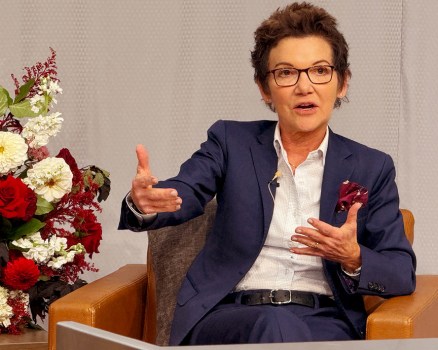

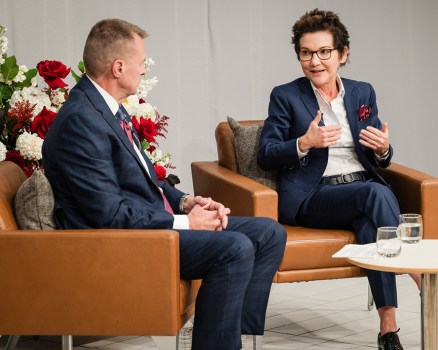
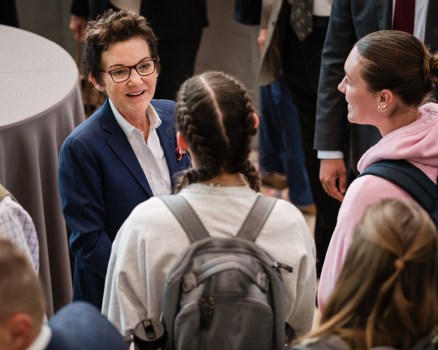
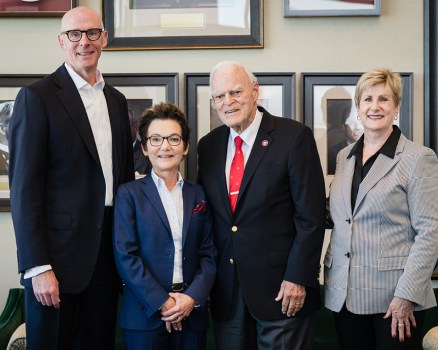
Photo credit – Natalie Simpson
Sign up for notifications on Mary C. Daly’s speeches, remarks, and fireside chats.
About the Speaker
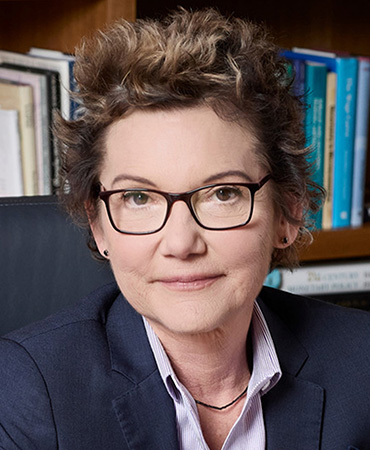
Mary C. Daly is President and Chief Executive Officer of the Federal Reserve Bank of San Francisco. In that capacity, she serves the Twelfth Federal Reserve District in setting monetary policy. Prior to that, she was the executive vice president and director of research at the San Francisco Fed, which she joined in 1996. Read Mary C. Daly’s full bio.
